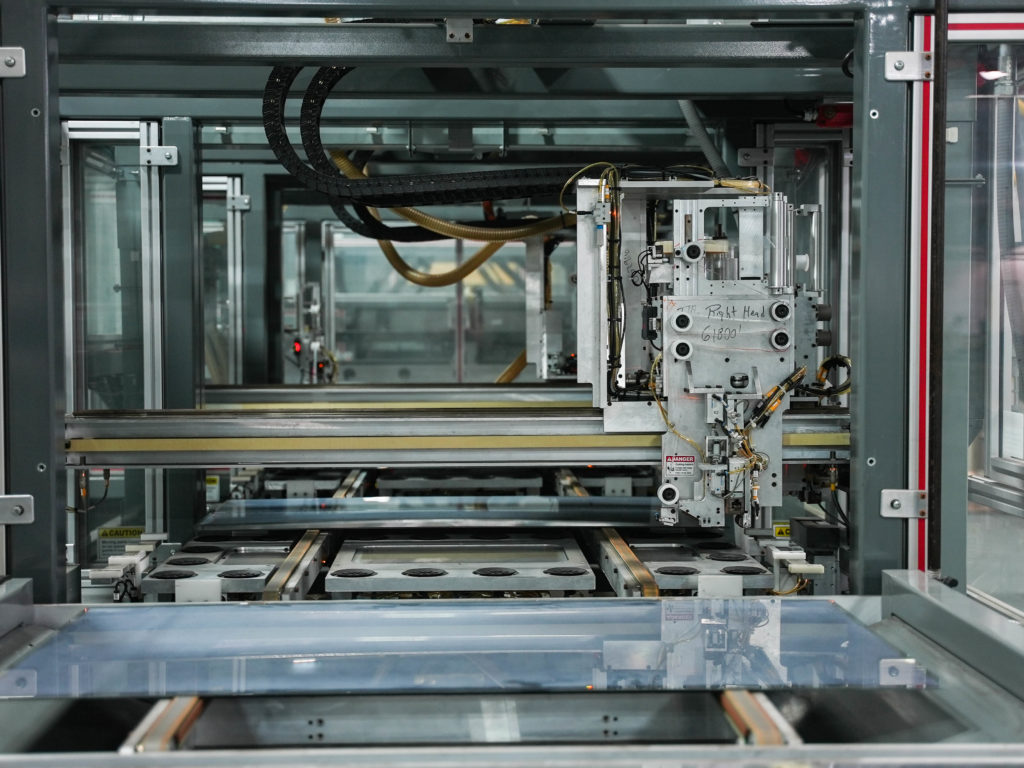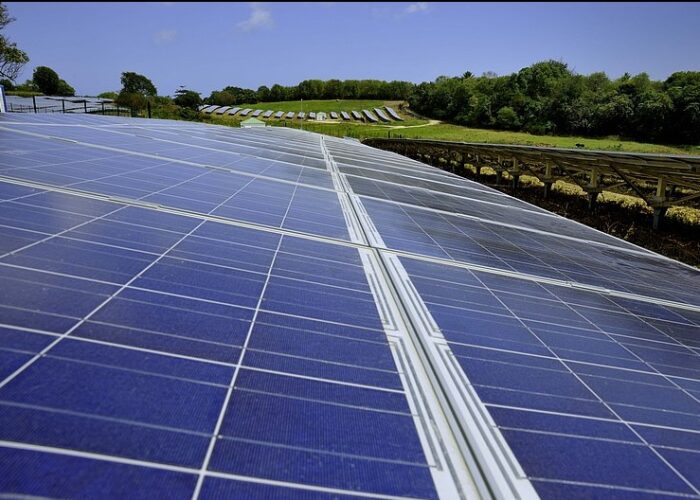
As 2022 comes to an end, PV Tech is looking back on the year in solar, reflecting on some of the biggest stories and trends of the last 12 months. Following Q1, Q2 and Q3, today’s review details domestic manufacturing plans and supply chain turbulence.
Q4 2022 has very much been the cumulation of the preceding year. Rising prices across the PV industrial chain throughout 2022 finally peaked and began to fall, the effects of the US’ Inflation Reduction Act (IRA) began to be felt in domestic manufacturing announcements and the country’s ongoing investigation into the circumvention of import tariffs by companies in Southeast Asia finally came to a head.
Unlock unlimited access for 12 whole months of distinctive global analysis
Photovoltaics International is now included.
- Regular insight and analysis of the industry’s biggest developments
- In-depth interviews with the industry’s leading figures
- Unlimited digital access to the PV Tech Power journal catalogue
- Unlimited digital access to the Photovoltaics International journal catalogue
- Access to more than 1,000 technical papers
- Discounts on Solar Media’s portfolio of events, in-person and virtual
In the first days of December, a US Department of Commerce probe found that more than 20 solar manufacturers with operations in Southeast Asia had been circumventing anti-dumping and countervailing duty (AD/CVD) tariffs the US had imposed on Chinese module exporters. In reality, the findings are the exposed nerve ending of a snaking series of events reaching back into mid-2021; months of petitioning, investigation, rejection and exchange between Commerce and the US solar industry as the country has tried to strike a balance between maintaining a healthy supply of modules and addressing concerns about China’s dominance of the global PV manufacturing landscape.
President Biden had removed the tariffs on Southeast Asian imports in June, declaring a two-year freeze in aid of boosting solar deployment. Nevertheless, US solar deployment forecasts have been slashed; the country gets 80% of its modules and cells from the four countries highlighted in Commerce’s findings and reactions to the decision foresaw the possibility that a US manufacturer could challenge the legality of the president’s waiver.
Into this mix throw the Uyghur Forced Labor Prevention Act, which has seen modules stacked at US customs as its combined tariffs and sanctions on Chinese imports create ongoing supply chain issues, and the US solar market seems to be caught in a bind as 2022 ends between the long-term aspirations of AD/CVD tariffs and the short-term reality of billions of dollars of renewable energy investment waiting for equipment that isn’t arriving.
The ‘game-changer’ that is the IRA, introduced in August, can’t be capitalised on if modules can’t be sourced. As such, the last quarter of the year has seen a push for domestic manufacturing in the US, both as a result of the IRA and in response to supply chain insecurity.
22GW of new domestic PV manufacturing capacity has been planned in the US since the IRA came into force. Perhaps most notable is Enel North America’s planned 3GW cell and module factory, which the company directly framed as an antidote to supply chain issues. Further upstream, CubicPV recently announced a 10GW silicon wafer manufacturing facility.
Whilst it may have gone the furthest with new policy support so far, the US hasn’t been the only player planning to build out a manufacturing base. Despite seeing solar installs jump 47% year-on-year, the EU has been under increasing pressure from the industry to facilitate domestic PV manufacturing growth. It launched the European Solar PV Industry Alliance this month, and with it plans for 30GW of manufacturing capacity by the end of the decade. The situation is perhaps more complex than in the US, as a single unified direction is harder to reach, but the alliance establishes a governmental shift towards domestic manufacturing.
Q4 saw polysilicon wafer prices begin to drop for the first time in 2022, in a trend that PV Price Watch has predicted will continue for the foreseeable future as production capacity comes online and supply begins to catch up with demand.
It began with TCL Zhonghuan dropping wafer prices in early November, the first time all year. Then, later in the month, polysilicon and mono wafer prices began, tentatively, falling. This slight slipping travelled upstream and started to wobble the silicon prices which had hitherto stood steadfastly high. By mid-December, prices were falling across the PV industrial chain. Wafer prices fell daily, cell prices fell 6-8% in a week and the downward trend of module pricing saw some developers postponing purchases until the new year.
The start of 2023 may see this trend continue across the industrial chain. Daqo New Energy has announced plans to increase its Inner Mongolia polysilicon production capacity by 100,000MT next year, as well as multiple supply deals with solar manufacturers. The US will continue to expand its manufacturing capacity as the AD/CVD tariff rulings play out, with Europe, India and Australia all outlining plans to follow suit.







